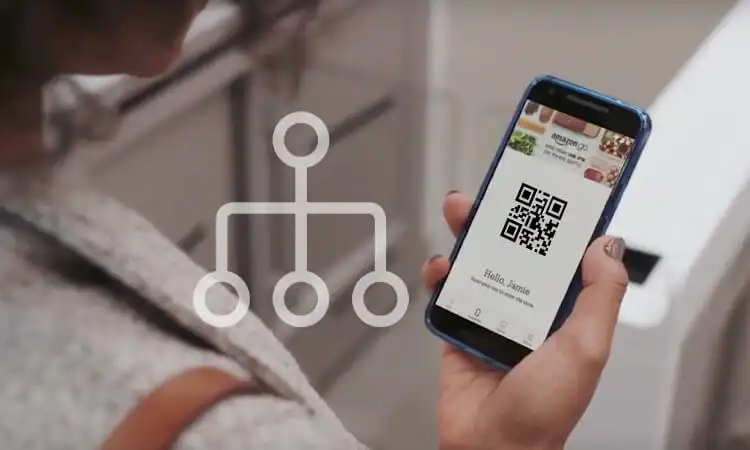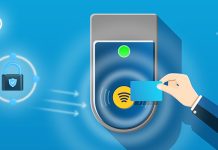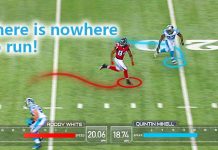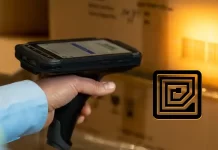QR Codes in retail are becoming increasingly popular. With the rise of contactless payments and the need for interactive and engaging customer experiences, QR codes are becoming a go-to solution for retailers. Research has shown that QR codes can benefit retail businesses in various ways, from driving traffic to a retailer’s website to streamlining the checkout process. In this article, we’ll explore different ways to use QR Codes in retail and how they can improve business operations.
Using QR Codes in Retail to Enhance Customer Engagement
QR codes are a powerful tool for retailers looking to enhance customer engagement. Retailers can create interactive and memorable experiences that customers will remember long after they leave the store by using QR codes.
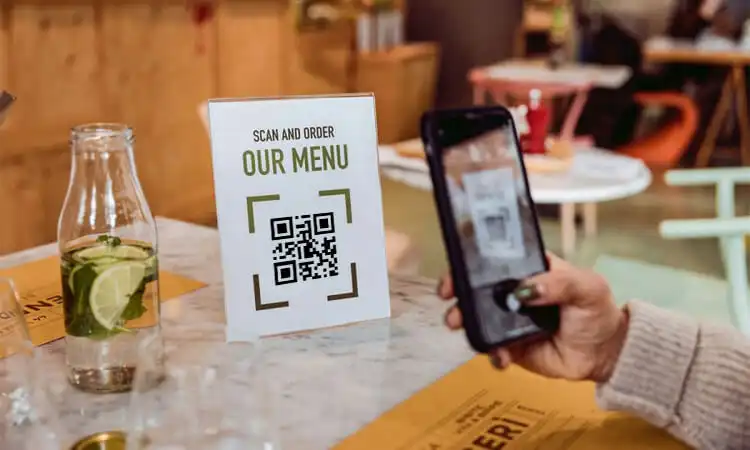
Here are a few ways to use QR codes in retail to enhance customer engagement:
- Scavenger hunts: QR codes can be used to create scavenger hunts in-store. Customers can scan QR codes to access clues and hints about where to find the next code. This is a fun and interactive way to engage customers and encourage them to explore the store.
- Product information: QR codes can be used to provide customers with more information about products. Customers can access product specifications, reviews, and other helpful information by scanning a QR code. This can help customers make informed purchasing decisions and feel more confident about their choices.
- Interactive displays: QR codes can create interactive displays that engage customers and promote products. For example, a QR code can be placed next to a product display. It allowing customers to scan the code and watch a video about the product or access exclusive content.
- Loyalty programs: QR codes can be used for loyalty programs, allowing customers to earn rewards and discounts for scanning codes. This is a great way to incentivize customers to visit and purchase the store more frequently.
Research has shown that using QR codes in retail can significantly impact customer engagement. According to a survey by MobileIron, 70% of consumers are willing to download an app to scan a QR code. And 63% of consumers said they are more likely to scan a QR code if they know it will lead to exclusive deals or discounts.
By using QR codes in retail, retailers can create a unique and engaging experience for their customers. Whether through scavenger hunts, product information, or loyalty programs, QR codes are a versatile tool. This is because it can help retailers connect with customers and build brand loyalty.
Of course, the prerequisite to reaping the benefits of QR codes in retail is to make sure your QR codes are working properly. You can view this article to check step by step if your QR code is in working condition: QR Code Testing Process.
Using QR Codes in Retail to Offer Exclusive Deals and Discounts
QR codes can be a powerful tool for retailers offering exclusive deals and discounts to their customers. These two-dimensional barcodes can be scanned using a smartphone camera to provide information instantly.
Retailers can place QR codes on in-store displays, product packaging, or receipts to offer customers quick access to exclusive promotions. This can help incentivize customers to purchase, increasing sales and customer loyalty.
Furthermore, studies show that customers are more likely to purchase if they are offered a discount or special promotion. QR codes can be a great way to offer these incentives while also gathering valuable customer data. Such as email addresses or phone numbers, for future marketing campaigns.
Retailers can also use QR codes to track the success of their promotions. By analyzing the number of scans, they can determine which promotions are most successful and adjust their marketing strategies accordingly.
However, retailers should be mindful of the placement of QR codes to ensure that they are easily accessible and visible to customers. Additionally, promotions should be clear and easy to understand so customers can take full advantage of them.
Using QR Codes in Retail for Contactless Payment
QR codes are a convenient and secure way to facilitate contactless payments in retail settings. By using QR codes, retailers can provide customers a fast and easy way to pay for their purchases without handling cash or credit cards.
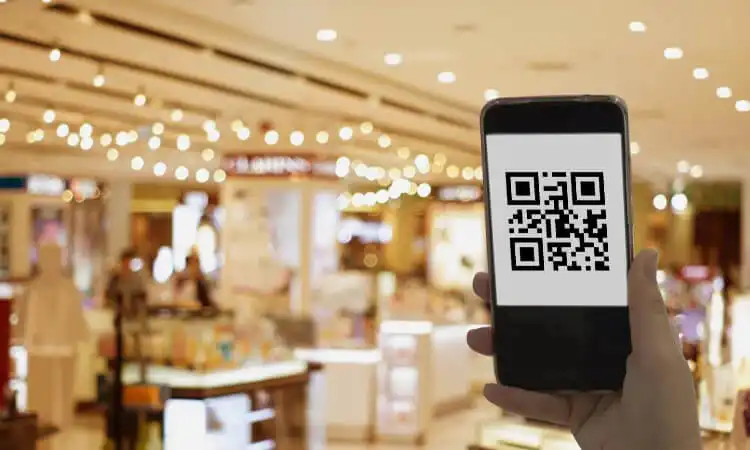
Here are some ways retailers can use QR codes for contactless payments:
- Mobile wallets – Many mobile wallet apps, such as Apple Pay and Google Pay, use QR codes to facilitate contactless payments. By integrating with these apps, retailers can offer customers a seamless payment experience and reduce the risk of fraud.
- In-store QR codes – Retailers can also create their own in-store QR codes that customers can scan to make payments. This is a great option for retailers who don’t want to rely on third-party apps or who want to provide customers with a branded payment experience.
- Self-checkout – QR codes can be used to create self-checkout stations in stores. Customers can scan a QR code to start the checkout process and then scan items as they add them to their cart. This can help reduce wait times and improve the overall shopping experience.
Research has shown that QR codes are a popular and effective way to facilitate contactless payments. According to a study by Juniper Research, the use of QR codes for payments is expected to grow to $2.7 trillion by 2022. Additionally, a survey by PYMNTS found that 73% of consumers would use a QR code to pay for a purchase if it was available.
You can also learn about the benefits of QR codes for museums from this article: Museum QR Code: An Innovative Approach to Engage Visitors
Using QR Codes in Retail to Drive Traffic to Your Website
Using QR codes in retail effectively drives traffic to your website, increasing online visibility and potentially boosting online sales. Here are some tips for using QR codes in retail to drive traffic to your website:
Placement and Size of QR Codes
QR codes should be placed in areas that are easily visible to customers, such as on product packaging or in-store displays. It’s also important to ensure that the QR codes are sized appropriately for easy scanning.
Examples of using QR codes in retail: Ikea used them on their in-store product displays, which redirected customers to the company’s website. This allowed customers to view additional product information while also driving traffic to their website.
Mobile Optimization
Retailers should ensure their website or landing page is optimized for mobile viewing. This means the website should be easily navigable on a smartphone and provide relevant information to the customer.
Examples of using QR codes in retail: Sephora uses QR codes in-store to give customers access to their Beauty Insider loyalty program. By scanning the QR code, customers are redirected to a mobile-optimized landing page that allows them to sign up for the program and receive exclusive discounts.
Valuable Information
QR codes should provide customers with valuable information they can’t easily find elsewhere. This can include product reviews, how-to guides, or exclusive discounts.
Examples of using QR codes in retail: Macy’s uses QR codes on product packaging to give customers user-generated reviews. By scanning the QR code, customers can read reviews from other customers, helping them make informed purchasing decisions.
Using QR Codes in Retail to Create Interactive Displays
There are many benefits of QR codes in the retail industry. It is a valuable tool for creating interactive displays in retail stores. These codes can uniquely engage customers and provide additional information and entertainment. Here are some ways to use QR codes in retail to create interactive displays:
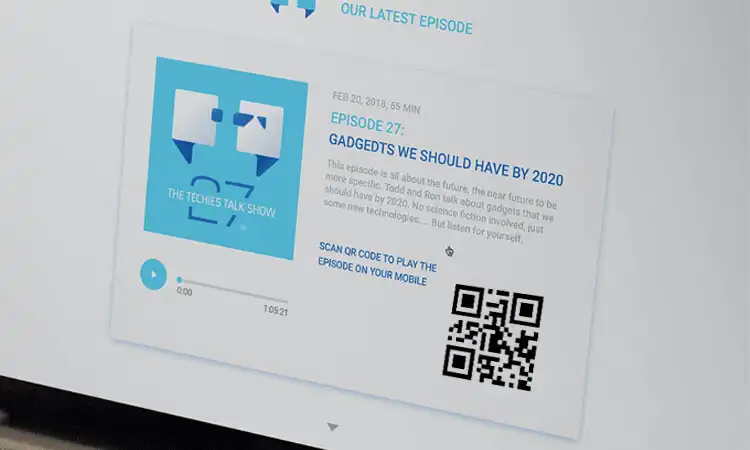
- Promoting New Products. You can promote new products by directing customers to videos, images, or web pages. You can highlight the features and benefits of the product in it.
- Best Ideas for Using Retail QR Codes: Clothing stores can use QR codes on their window displays to showcase new arrivals. By scanning the QR code, customers can see a video of a fashion show featuring new clothing items.
- Creating Interactive Displays with QR Codes. You can use QR codes to create interactive displays. It lets customers access product information, videos, and other content with a simple scan.
- Best Ideas for Using Retail QR Codes: Home appliance stores can place QR codes on their product displays. This QR code allows customers to scan the code and watch a video demonstration of how the product works.
- Personalizing Customer Experiences. QR codes in retail can personalize the customer experience by providing targeted content based on the customer’s interests.
- Best Ideas for Using Retail QR Codes: The shoe store can create a QR code display that allows customers to scan the code and receive personalized shoe recommendations based on their previous purchases.
- Promoting Social Media Engagement. QR codes in retail can be used to promote social media engagement by encouraging customers to follow the brand on social media platforms.
- Best Ideas for Using Retail QR Codes: Cosmetic stores can create a QR code display that directs customers to the brand’s Instagram page. They can find makeup tutorials, customer reviews, and other content there.
Using QR Codes in Retail to Streamline Checkout Process
QR codes are more than just a tool for product information and interactive displays. They also have the potential to improve the checkout process in retail, resulting in faster, more efficient, and more satisfying customer experiences.
Mobile payments are among the most common uses of QR codes for checkout. With QR code-based payment systems like Walmart Pay and Target’s Wallet, customers can make quick and secure payments using their smartphones.
In addition to mobile payments, QR codes can give customers an electronic receipt. By scanning the QR code, customers can receive a digital copy of their receipt. This eliminates paper waste and makes it easier to track purchases.
Moreover, QR codes can facilitate self-checkout systems. Customers can scan the QR code of each item they want to buy and pay using their smartphone, avoiding needing a cashier. This can significantly reduce checkout lines and wait times. It provides a more efficient and convenient shopping experience for customers.
In summary, QR codes in retail can streamline the checkout process, resulting in reduced wait times and a more satisfying customer experience. Retailers should consider utilizing QR codes for mobile payments, electronic receipts, and self-checkout systems to give customers a more efficient checkout process.
QR codes in retail can be used to integrate social media and increase brand awareness. Retailers can encourage customers to follow their social media accounts and even purchase directly from social media platforms using QR codes.
Linking QR codes to a retailer’s social media profile is a great way to use them for social media integration. By placing a QR code on a product or display, customers can scan the code to follow the retailer’s social media accounts like Facebook, Instagram, or Twitter. This increases the retailer’s social media following and allows them to engage with customers personally.
QR codes can also be used to promote social media campaigns and contests. By linking a QR code to a social media campaign or contest, retailers can encourage customers to participate by scanning the code and following the retailer’s social media accounts. This can increase brand awareness and drive sales.
Retailers can also use QR codes to link to shoppable posts on social media platforms. This allows customers to easily purchase products directly from social media posts without leaving the platform. This can increase sales and make the shopping process more convenient for customers.
Using QR Codes in Retail to Track Inventory and Sales Data
QR codes occupy an increasingly important position in the retail industry. This is because they can be used not only for marketing and engagement but also for tracking inventory and sales data. By implementing QR codes, retailers can improve their inventory management and gain valuable insights into sales data.
Tracking Inventory with QR Codes
QR codes can be used to track real-time inventory, helping retailers avoid stock-outs or overstocks. By placing QR codes on each product, retailers can easily scan the code every time a product is sold or restocked, updating the inventory system in real-time.
Recording Sales Data with QR Codes
QR codes can also be used to capture sales data in real time, providing valuable information. Such as the date, time, location of the sale, product details, and price. By scanning a QR code at the point of sale, retailers can analyze sales trends and make informed decisions about inventory and pricing.
Analyzing Sales Data with QR Codes
Retailers can gain insights into customer behavior and preferences by collecting sales data with QR codes. This data can be used to identify top-selling products, predict future sales, and tailor marketing campaigns to specific customer segments. Retailers can also optimize their pricing strategies and improve the sales process by identifying areas for improvement. QR codes can provide retailers with valuable data to help them make informed business decisions.
QR Code Retail Example: Leading Brands Successfully Use QR Codes in Their Retail Stores
QR codes transcend geographical limitations and cultural differences when implemented thoughtfully. The key to developing an impactful QR code strategy for retail is customizing it to each location and audience. Notable brands exemplify optimizing QR codes for their respective regions and customers:
Heinz Using QR Codes on Their Product Packaging
QR codes are a powerful way for brands to create exciting digital customer experiences. By adding QR codes to product packaging, companies can offer targeted discounts, exclusive content, and more with a quick scan. For example, Heinz used QR codes to offer an online green trivia quiz on their eco-friendly packaging, encouraging customers to learn about its sustainability initiatives. QR codes can build loyalty, encourage interaction, and create authentic customer connections, transforming a regular product into an unforgettable experience. The possibilities are endless, from innovative campaigns and limited-time offers to behind-the-scenes access and immersive learning opportunities. So, next time you spot a QR code on a product, scan it – you never know where it might take you!
Ralph Lauren Uses QR Codes in Offline Advertising
Ralph Lauren uses QR codes in print materials and ads to create interactive touchpoints. Scanning the codes gives customers exclusive content, special offers, and behind-the-scenes footage. QR codes provide unique brand insights and deeper engagement with products. They also act as hidden secrets, rewarding savvy consumers. Scanning a QR code sparks discovery and passion for the brand, strengthening connections and building loyalty. QR codes have become an integral part of Ralph Lauren’s marketing strategy, transforming marketing materials into gateways to a lifestyle.
Just like Walmart, Use QR Codes for Cashless Payments
If you want to stay ahead of the curve like major retailers Walmart and Target, consider adopting QR code payments. These cashless systems are becoming increasingly popular, especially among millennials and customers who prefer to shop without carrying physical cash. With QR code payments, each customer’s payment method on file generates a unique QR code that can be quickly scanned with a mobile device at checkout to complete the payment instantly. No more swiping cards or entering payment details manually!
Related Articles: The Impact of Walmart RFID
QR codes in retail enhance customer engagement and offer exclusive deals. They’ve become an essential tool due to mobile device popularity. Retailers can leverage QR codes to build stronger customer connections and unlock growth opportunities.
About QR Codes in Retail FAQs
-
What is a QR code, and how does it work in retail?
A QR code is a two-dimensional barcode that a smartphone camera can scan. In retail, QR codes can be used for various purposes, such as product information, payments, discounts, and loyalty programs.
-
What are the benefits of using QR codes in retail?
QR codes can provide a more personalized and convenient shopping experience for customers. They can enhance customer engagement and offer exclusive deals and discounts. They also provide retailers valuable data and insights into customer behavior and preferences.
-
How do retailers use QR codes to offer exclusive deals and discounts?
Retailers can create QR codes that customers can scan to access coupon codes, loyalty programs, and social media promotions. QR codes can incentivize customers to make purchases and increase sales.
-
How do QR codes improve the customer experience in retail?
QR codes can give customers instant access to product information, reviews, and recommendations. They can also simplify the checkout process, offer exclusive deals and discounts, and enhance customer engagement.
-
How do QR codes help retailers track customer behavior and preferences?
QR codes can be linked to a customer’s profile. It allows retailers to track their behavior and preferences, such as their purchase history, preferences, and demographics. This data can be used to personalize marketing and improve the overall customer experience.
-
Can QR codes be used for contactless payments in retail?
Yes, QR codes can be used for contactless payments in retail. Customers can scan a QR code displayed at the checkout counter to complete the transaction using their smartphone.
-
How can retailers ensure the security of QR code payments?
Retailers should use secure payment gateways and encryption to ensure the security of QR code payments. Customers should also be educated on safe practices for scanning QR codes. Such as avoiding suspicious codes and only scanning codes from trusted sources.
-
How can retailers use QR codes for inventory management?
QR codes can be used to track inventory and provide real-time updates on stock levels. They can also be used to monitor product expiration dates, track shipments, and streamline the supply chain.
-
How do QR codes help retailers with marketing?
QR codes can drive traffic to a retailer’s website or social media pages. They can promote exclusive deals and discounts and provide customers with personalized product recommendations and offers.
-
What is the future of QR codes in retail?
QR codes are expected to continue to play a significant role in retail. This is because they offer a cost-effective and versatile way for retailers to enhance the customer experience and drive sales. As technology advances, QR codes may be integrated with other technologies to create even more immersive shopping experiences, such as augmented and virtual reality.


